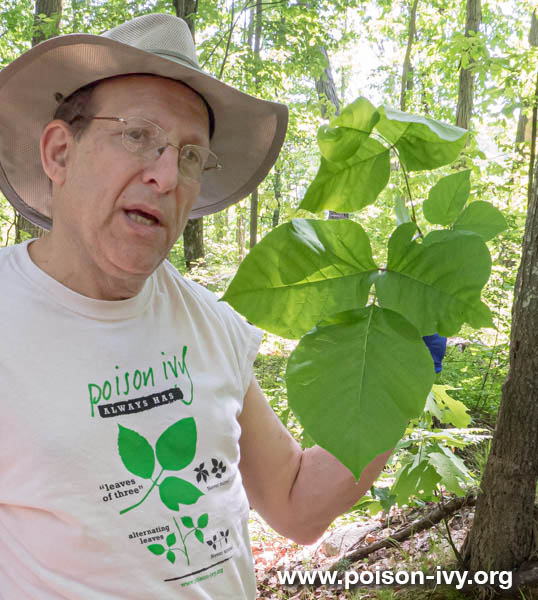
The first thing to say is: There is no 100% safe and easy way to remove these plants. As Dr. Edward Frankel said, the two choices are: Hand-to-Hand Combat and Chemical Warfare. And as those words imply, both methods have potential for trouble.
We will go over both methods, with some special notes for the different kinds of plants. And if you have feedback use our contact form to send it.
We have info on this page about using herbicides, manual removal, disposal and cleanup, and a special section on poison sumac.
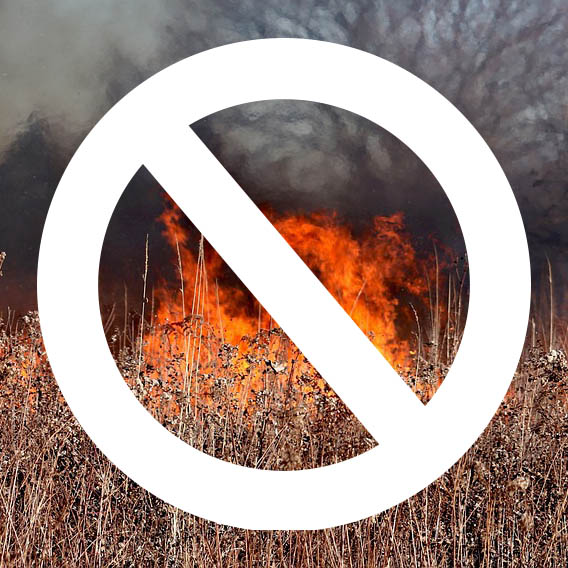
This is the first and most critical point: never burn either the wild plants or the ones you have torn out. The fire will transmit the offending oil, urushiol, into your lungs and onto your skin in small particles.
The only known death from poison oak was from burning it as brush: the unfortunate person inhaled so much smoke that his lungs failed and even a hospital could not save him.
And keep in mind that firefighters have gotten quite sick from fighting brush fires where poison ivy and particularly poison oak in dry California are on fire.
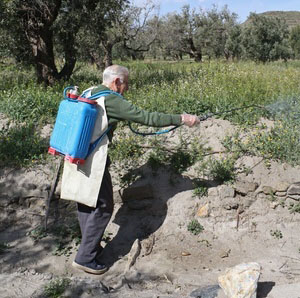
There are a variety of herbicides sold to kill poison ivy and oak, but all of them will also kill any broadleaf plants, including trees, garden flowers, and vegetables.
And the health effects of these products on people and pets is questionable, so some people use them as a last resort. Glyphosate, one of the most common herbicides, is actually banned in France and other countries because its safety for animals is suspect.
Read the directions! Use as little as you can. Overuse of broadleaf killer can kill off your cherished plants and even trees. Some people find you need multiple applications to kill the plant, while others find just one works.
I have tried using household chemicals like vinegar and bleach to kill poison ivy: they kill the leaves that you spray them on, but they don’t kill the plant, which just grows back.
However, I have two stories about very determined anti-spray people who were faced with such massive infestations that they felt spray was the only alternative.
But if you decide to use weedkiller spray, the advice is to look for cool, moist days in spring, with no wind.
When I was a kid and my task was to spray all the poison ivy on our farm (before we knew about the risks) I was careless filling the sprayers and slopped enough weedkiller around that I killed a large, and lovely beech tree that shaded our house.
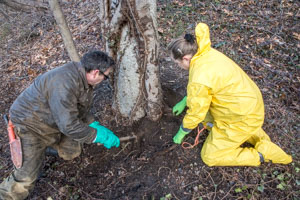
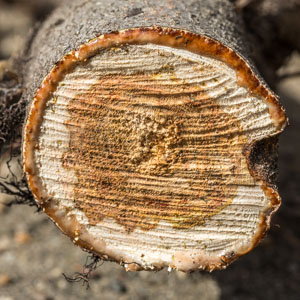
The same methods will work for both eastern poison ivy and western poison oak because they grow the same ways: as ground vines, climbing vines, and shrubs.
When you tear out the plant you always unleash lots of the plant oil which is very dangerous: it can land anywhere which is why you see people wearing hazmat suits. The leaves all carry some plant oil, urushiol, but the vines carry most of it – even in winter – and you must be careful cutting the vines.
Here is a video of me removing a stump covered by a mess of poison ivy. The video is just over a minute; the removal took about 40 minutes, the cleanup took another hour. I got only a few spots of poison ivy rash. And yes, wearing shorts was dumb. I washed myself VERY thoroughly when I was done.
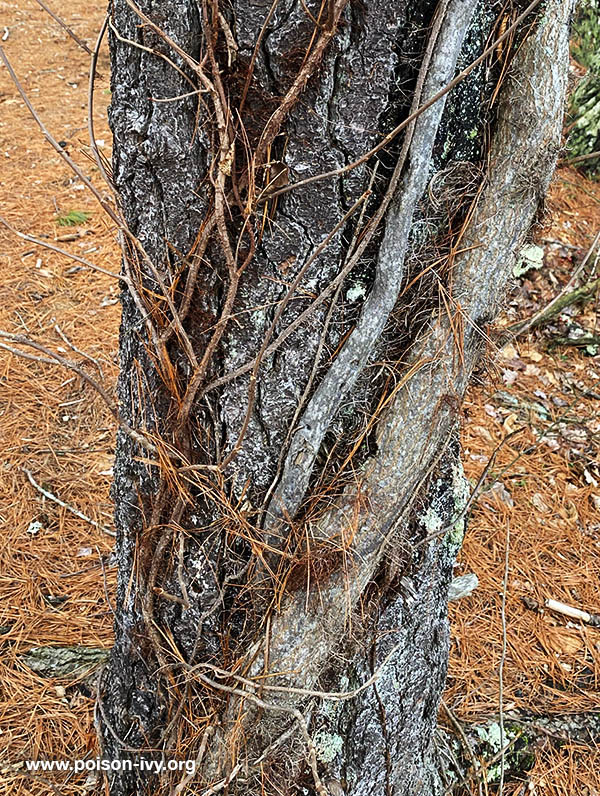
The ground vines can run for many yards and you can often follow them as you yank up a length of them and stuff it into your trash bag. But you do need to dig out the roots as much as you can to discourage them from growing back. Ground vines usually don’t have deep roots; it is the big climbing vines that have deep and gnarly root structures.
Climbing vines can be anything from 1/8 inch thick with no hair up to 4 inches or more with lots of hairy roots. Oddly, even with all those root hairs the vines are usually not hard to yank off a tree or wall. But if the vines are knotted through a fence or stone wall it is a long nasty process to yank them out, bit by bit.
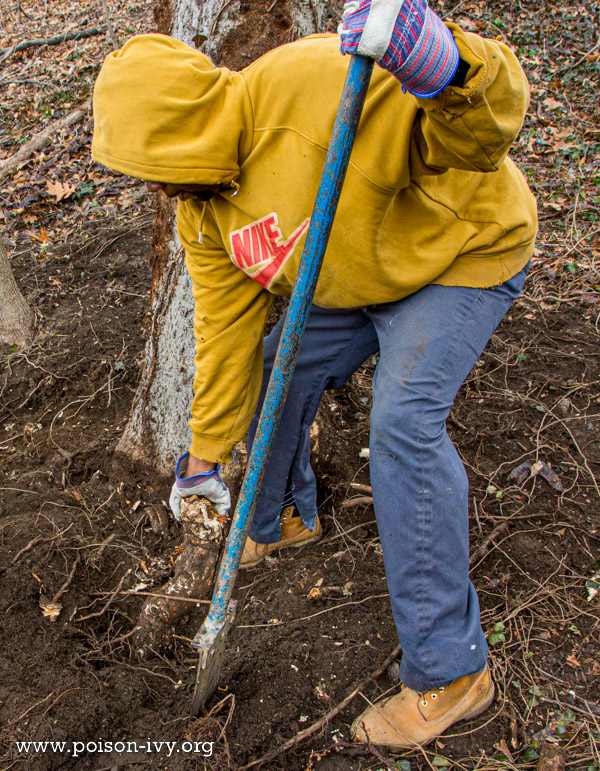
Big climbing vines may have large root systems, so you may want to attack them with shovels and axes, always keeping in mind that vines and roots are full of urushiol oil that can spray you when cut into them.
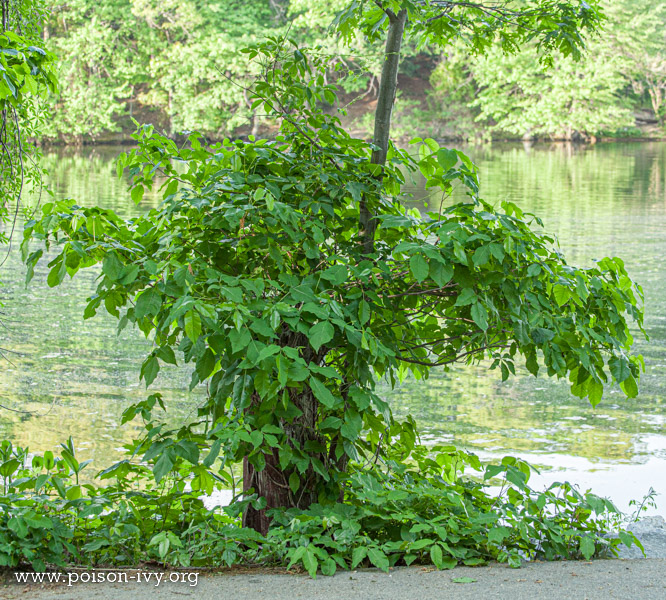
Going after a vine that has “exploded” into a shrub is particularly difficult. You have to start from the outside and cut your way into the heart of the plant until you reach the main vine and the roots. All the while you will be releasing more urushiol oil as you go.
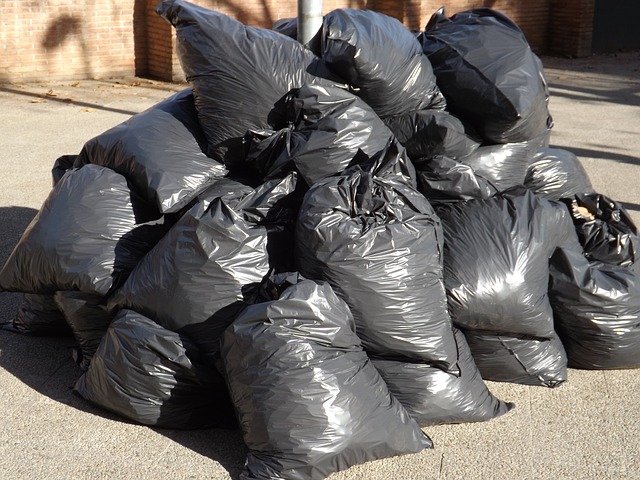
What do you do with all the vines and shrubs you have yanked out of the ground and peeled off of trees and walls?
The cut off and dug up plants almost never re-grow if you can just toss them onto a rarely visited piece of land. But many times such a piece of land is not available.
In which case you will likely need to dispose of them as yard waste. But it would be extremely unwise to do so without contacting whoever picks up your yard waste and checking with them first.
And we repeat: don’t even think about burning them!
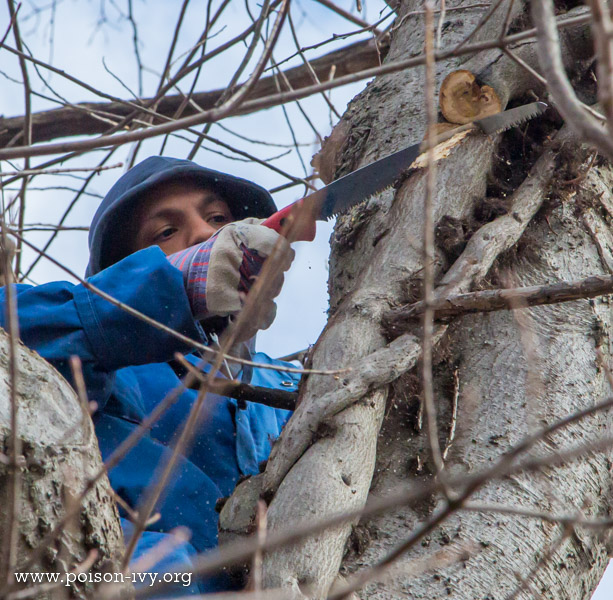
You have to assume that every tool and article of clothing has lots of urushiol oil on it and will transfer that oil to anyone or anything that touches it.
So everything must be washed, but how?
Start by rinsing things with a powerful spray from a hose, to dislodge whatever oil you can. True, the water will now be contaminated with oil, but if it runs down a drain that should keep things a bit safer.
Then, wearing fresh thick rubber (not latex) gloves and disposable rags, wipe everything down with soapy water or mild bleach, and rinse often.
If there are tools that may rust, when you are pretty sure they are clean you can oil them or dry them.
Hazmat suits are usually disposable, but assume they are covered with urushiol oil and handle with extreme care.
Facemasks, work gloves, everything must be cleaned or thrown away.
You can wash garments in a washing machine, but I would suggest using mild bleach, don’t wash “innocent” items along with poison ivy garb, and wash everything twice.
We sell poison ivy detection wipes, but they are just not sensitive enough to tell you if your clothes, tools, or dog still has enough oil on them to cause a rash.
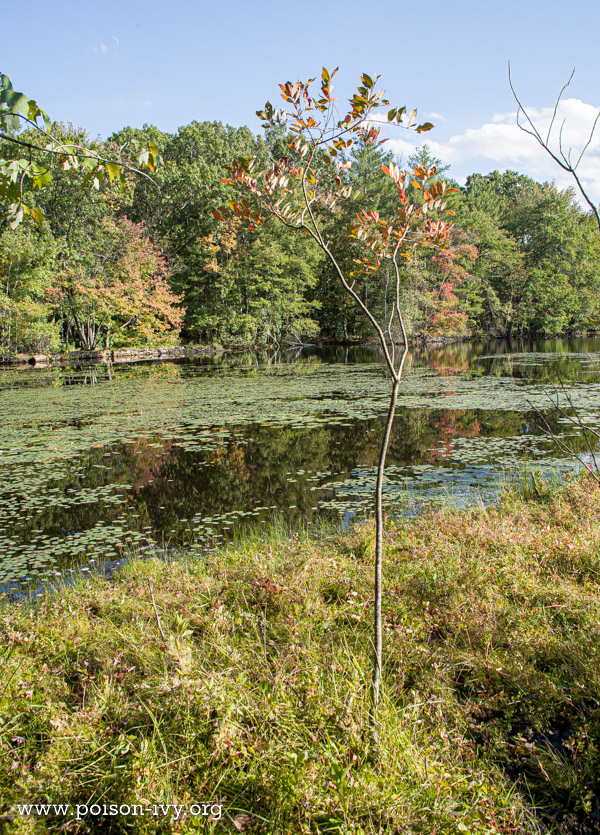
Since poison sumac is a small tree that grows only in very wet areas – often with its roots in water – you have to be careful using herbicide on it. The herbicide will likely get into the water and may kill all sorts of other plants.
But rooting out poison sumac by hand is also messy because it is usually growing in areas too wet to walk to around in easily. But a pair of tall and thick rubber boots would allow you to walk up and cut down the small sumac tree.
On the other hand, in most cases, it may be fine to leave the poison sumac alone: growing in a wetland means people are not likely to run across it, so there may be no need to remove it.
We have seen cases where a suburban lawn is bordered by a pretty thick growth of poison sumac, close enough to the lawn where a child might retrieve a toy from amongst it. In these cases, cutting down the trees closest to the lawn makes sense, but this is a pretty rare situation.